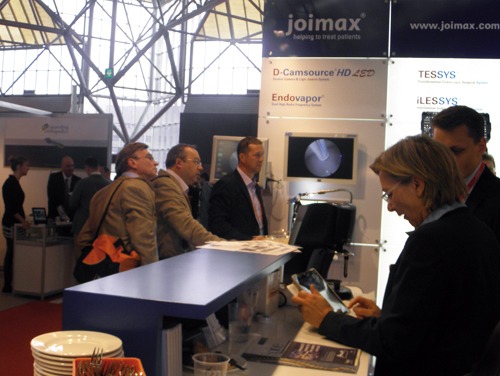Anthony Yeung, M.D., receives the Parviz Kambin Award of the Society for Minimally Invasive Spine Surgery (SMISS) in cooperation with joimax® for his outstanding achievements in the field of minimally-invasive endoscopic spinal surgery.
Anthony Yeung, M.D., known to his many friends and admirers as “Tony,” is the 2012 recipient of the Parviz Kambin Award, given by the Society for Minimally Invasive Spine Surgery (SMISS) to honor outstanding surgeons in the field of endoscopic spine surgery. The Society held the ceremony during its annual meeting, September 23, and Yeung’s son, Christopher Yeung, M.D., accepted the award for his father.
SMISS established the Kambin Award, in collaboration with joimax®, to recognize the surgeons who have successfully performed more than 1,000 cases of endoscopic spinal surgery, trained more than 100 surgeons in the procedure, (in both cases specifically transforaminal surgery), published in numerous scientific publications and professional journals and given presentations at leading congresses. Finally, the recipient must demonstrate a strong commitment to clinical research and training. Choll Kim, M.D. and executive director, Society for Minimally Invasive Spine Surgery, wrote, “Tony is my hero and certainly deserves such an award.”
The award is named for Parviz Kambin, M.D. to recognize and honor his pioneering work that paved the way for minimally invasive endoscopic spine surgery. Kambin identified the unique safe access point to the spinal canal now known as the “Kambin Triangle.” Previous awardees are Parviz Kambin, M.D., professor of Orthopedic Surgery, Drexel University; Michael Schubert, M.D., APEX Spine Center, Munich, Germany; and Menno Iprenburg, M.D., Veenhuizen, Netherlands.
SMISS is the only society dedicated solely to advancing minimally invasive spine surgery. Endoscopic spine surgery constitutes but a small portion of SMISS’ overall educational content regarding minimally invasive spine surgery. SMISS’ primary role is to provide a forum for the exchange of ideas and information.


